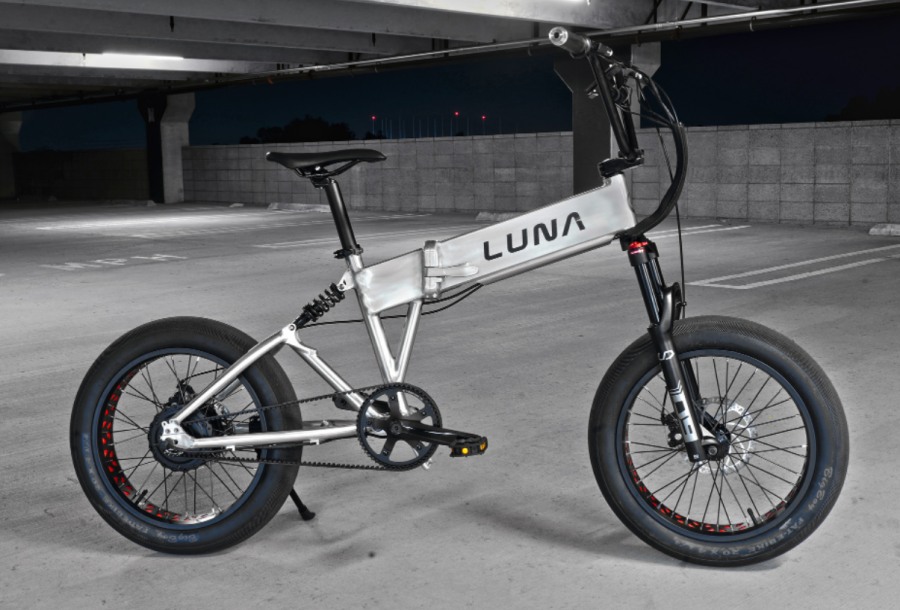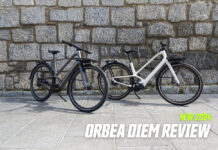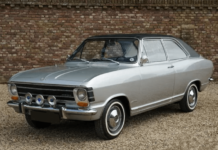I went to the Interbike convention back in 2015 (to see that article, click here), and that was the first year I saw manufacturers advertising fat tires in a variety of sizes, including 20-inch. Until then, there had only been 26 x 4-inch tires for a while, and everyone was still wondering if they were going to catch on, or just be another fad that died out.
_______________________________________________
Back in 2019, we wrote about the “Taco Bike” Phenomenon (to see that article, click here), and then we updated the info on that scene when we listed new taco bikes with full suspension (to see that article, click here). One feature that these designs share is the small-diameter fat tire. I’d like to think I’m pretty good at identifying new trends that are about the gain popularity, but I have to confess that I thought American ebike buyers would not be interested in ebikes with these 20-inch fatties.
That doesn’t mean I didn’t like them, I do! It’s just that businesses have to be careful about risking large blocks of capital on buying 100 units, and then they only sell two or three of them.
For instance, in China, there is a style of ebike that is very popular. It “looks like” a moped, and it uses lead-acid batteries. Every time they have been tried in the US, they have failed. Even though they have pedals, they look like a light motorcycle with a step-through frame, and they get hassled by the police (click here for an example).

I have to confess that I also didn’t foresee the Taco bikes catching on as well as they did, but they have proven to be very popular. I’ve been informally polling ebikers every chance I get, and one trend I have seen in common with taco ebike owners is that many of them were not previously “bicycle people” or even previous ebike owners.
For years, the first ebikes I saw being marketed in the US were already being produced for the European market. They were low-powered 250W ebikes that “looked like” a pedal bicycle, and I must also add that they clearly made efforts to hide the fact that they were an ebike at all. It was as if their governments had conceded to allow the public to add a small boost for hills, but “not too much”. Plus the governments and also the ebikers wanted to blend-in, instead of stand out.
The federal legal power limit in the US for street ebikes was 750W (roughly one horsepower) and I was disappointed at how long it took for US retailers to sell an ebike that was actually capable of 750W. When using 750W, it’s not horrible to use a hubmotor for flat land, but for hills you really need either more power, or you need to give the motor the use of the bikes gears, and this was the driving reason behind the early popularity of the BBS02 in 2015
At the time I clearly remember thinking how insane it was to be trying to sell 36V hubmotors that had 500W, and were overheating on hills…when mid-drives existed and could be run at 48V for a true 750W.
I’m getting a little off on a tangent, but I said those things in order to say this…a lot of customers who don’t have a history with ebikes or pedal-bicycles are coming into the ebike world now, and they simply don’t care if the ebike they buy looks like a lightweight pedal bicycle (with a hidden motor to blend-in) and, they don’t care if it has “normal sized” tires. Many of them don’t already have friends with an ebike, and they are feeling no peer pressure to buy an ebike that “fits in” with their group.
_______________________________________________
Pedego Element
The first pic I’m posting here is the Pedego Element, simply because they have a great picture on their website that shows the uncommon proportions of an adult on a small ebike with fat 20-inch tires. It uses a Bafang 750W 48V geared hubmotor.

If you add suspension components, it can make the ebike heavier and more expensive, so…a solid frame that is made from aluminum can be compact, light, and affordable. A fat tire is not a proper “suspension” but…when you run it at medium pressures, it can really soften the ride and soak up the irregularities on the road. My favorite personal ebike uses 3-inch tires (mid-fat?). I must caution the readers that if you run a fat tire with the pressure too low, it can make the handling very “squishy” on turns, and I have wiped out once on a curve because of it.
A 20-inch fat tire and wheel are lighter than they look, and they are certainly much lighter and more compact that a full-sized 26 x 4-inch wide tire and wheel.
If the solid frame of a Pedego Element appeals to you, I can highly recommend a suspension seat-post to absorb shocks from unexpected potholes. (to read our article on those, click here). I have owned a Thudbuster and also a Suntour NCX, and I can enthusiastically recommend either one of them as a big benefit to the comfort of a ride on bumpy streets.
_______________________________________________
Juiced Rip Racer
We have been fans of Tora Harris and his company “Juiced Bikes” for a long time. Several ebike companies in the US have closed their doors over the last decade, and we are happy that he survived.

Juiced also offers a different shape of frame with 20-inch fat tires called the Hyper Scorpion, but that’s in the Taco Bike article listed earlier. They also use a popular Bafang geared hubmotor at 750W, using 48V.
_______________________________________________
Luna Cycles Eclipse
Luna Cycle is located in Southern California, and they always seem to be one step ahead of the trends that end up being popular across the US. They were an early promoter of powerful ebikes, and lowering the prices on the most popular features. Their “Taco Bike” is the popular Luna Banana, and their newest 20-inch wheeled ebike with fat tires that is “not a Taco bike” is the Luna Eclipse.

Luna has decided to add a couple of features to their offering. They chose a folding frame, and full suspension too. I can see this ebike becoming very popular with RV owners, aircraft, boats, and also 18-wheel truck drivers. This model is offered with a black frame, or the clear-coat aluminum shown above. This may even prove to be popular for apartment-dwellers who can’t leave their ebike outside, and don’t have a garage…
Another reason I believe this model will be popular with owners is that is uses a Gates belt-drive, instead of a chain. Chains need to be adjusted as they wear, plus they really do need to be oiled occasionally. The Gates belt is initially more expensive than a chain, but it lasts many times longer than the several chains you would have to buy without the belt. You also might not think that the lack of an oily chain would be a big deal, but many customers are really responding to the convenience and lack of oil-stains of the Gates belt.
This will sound like an advertisement, but Luna is marketing this at only $1,395, which is a good price for any reliable ebike, that doesn’t even have these features, which is an exceptional deal.
_______________________________________________
Rad Power RadRunner Plus
Rad Power’s headquarters are located in Seattle, Washington. They are going with a generic style of step-through frame, but I am happy to see that they are using a fully-welded cargo rack, instead of something that was clamped on as an optional accessory.

Rad Power is committing to stocking a wide variety of accessories for this cargobike, and I think that will work well for them. It was a very successful strategy for the full-sized Yuba Mundo cargobike, but the RadRunner is shorter and lighter than the Yuba, so I am certain it will find quite a few buyers.
_______________________________________________
KBO Ranger
I recently stumbled across the KBO Ranger, and they look like they will likely do OK with the American public. They have optional floorboards and various other cargobike accessories that can be added to customise it. They are using the popular Bafang 750W 48V system (I’m starting to see a trend here). Their website can be found by clicking here.

I remain a fan of the Yuba Mundo, but it is definitely a “full sized” cargobike. These mid-length cargobikes retain the functionality of having a well designed child-seat and other popular accessories, but they are shorter and lighter than the “Big Momma’s”.
_______________________________________________
Himiway Escape pro
It’s hard to find out information about Himiway. They have been around just long enough that I feel OK adding them to this list. They have a warehouse in the US, and one in Germany for the EU market. That being said, you order an ebike on their website, and they ship it direct to your house.

The Himiway Escape Pro
The Escape Pro appears to be using the aluminum cast wheel set from Bafang, part number H500W (click here)
_______________________________________________
CSC XP750-20
The “California Scooter Company” decided to jump on the 20-inch fat tire bandwagon, and the frame they chose is the classic BMX shape, and they are including a front suspension.

_______________________________________________
As I mentioned before, I like these smaller fat tires. They do seem to be very polarizing, because the pedal bicyclists who never liked electric bicycles in the first place will sneer at these even worse, claiming they are heavy and inefficient to pedal. That being said, I have had a crash on more than one occasion from the skinny front tire on my bicycle slipping on angled railroad tracks that crossed a street I was on, or a sewage grate that had slots which ran the same direction as my wheel. Of course, fat tires just glide over these kinds of traps.
This is not a comprehensive list, it’s just some info so that if these kinds of wheels and tires appeal to you, I want you to know that you are not alone, and there is a growing selection of frames and features that are available.
Karl from electric-fatbike.com had an article on how he found a fat tire frame he really liked (26 x 4-inch) for his hooning around the countryside when it was snowing, and he discovered he could simply swap the wheels for a 29’r set with 2.5-inch tires, which worked better for his summer riding down single-track trails. I don’t know what parts would allow that on these 20-inch fattie frames, but…I can see the benefit of a 2WD fat tire set in the winter, and instead of buying a second completely different frame and battery to ride in the summer, you could swap-in a more appropriate set for summer riding.
If I see anyone who has done that, I’ll post the pics and details here. Have fun, and ride safe…
_______________________________________________
Written by Ron/spinningmagnets, May 2022















